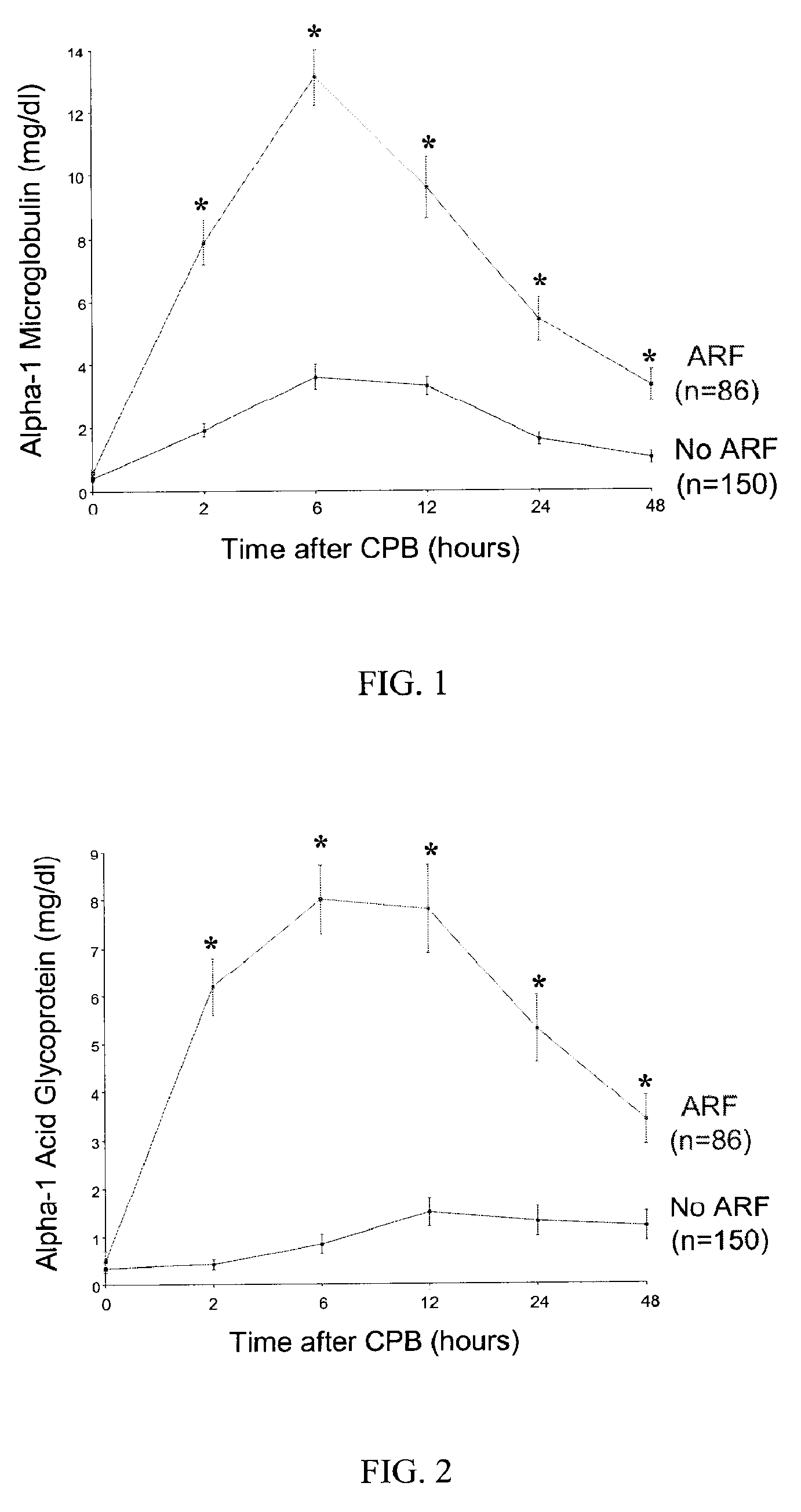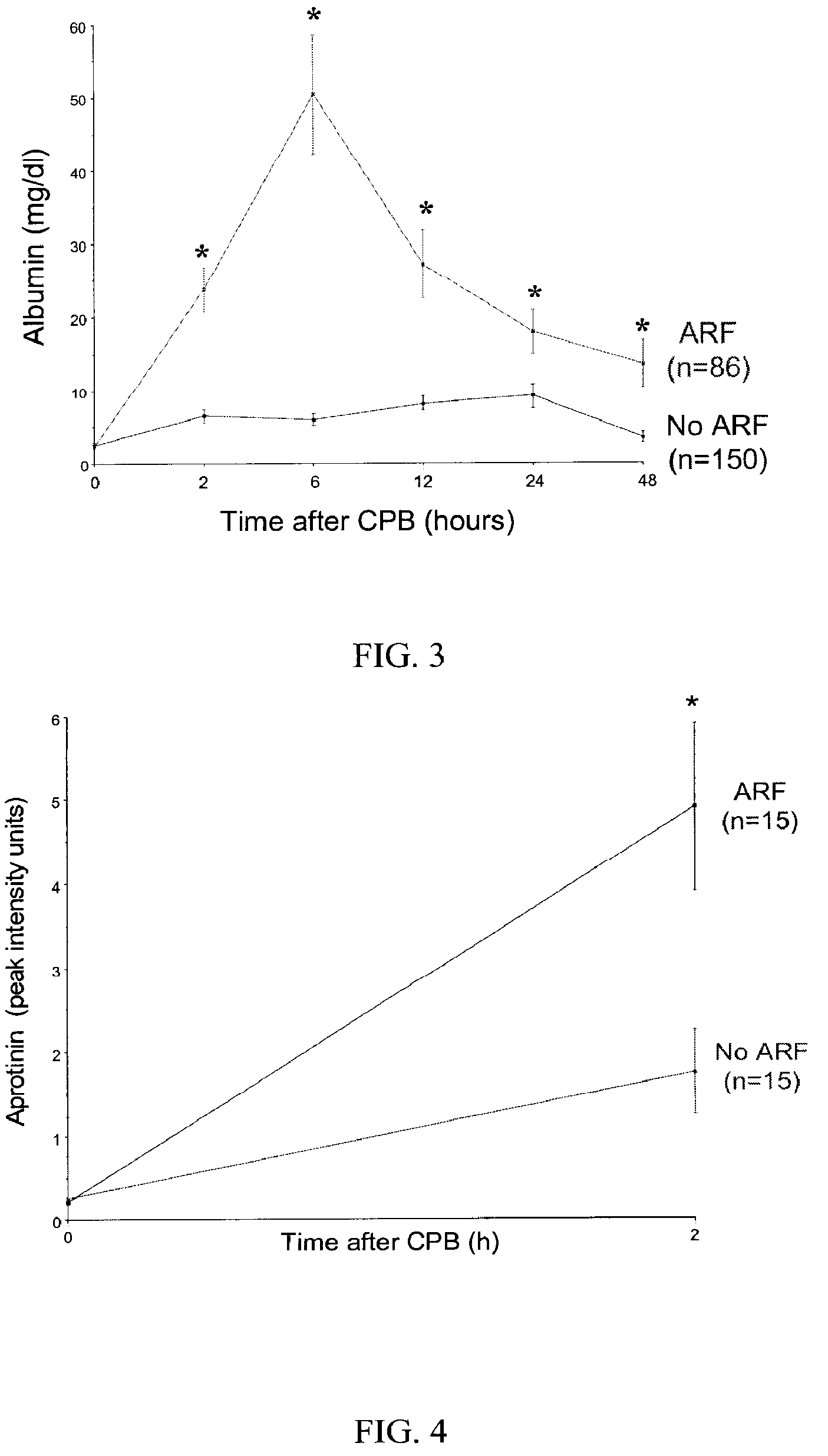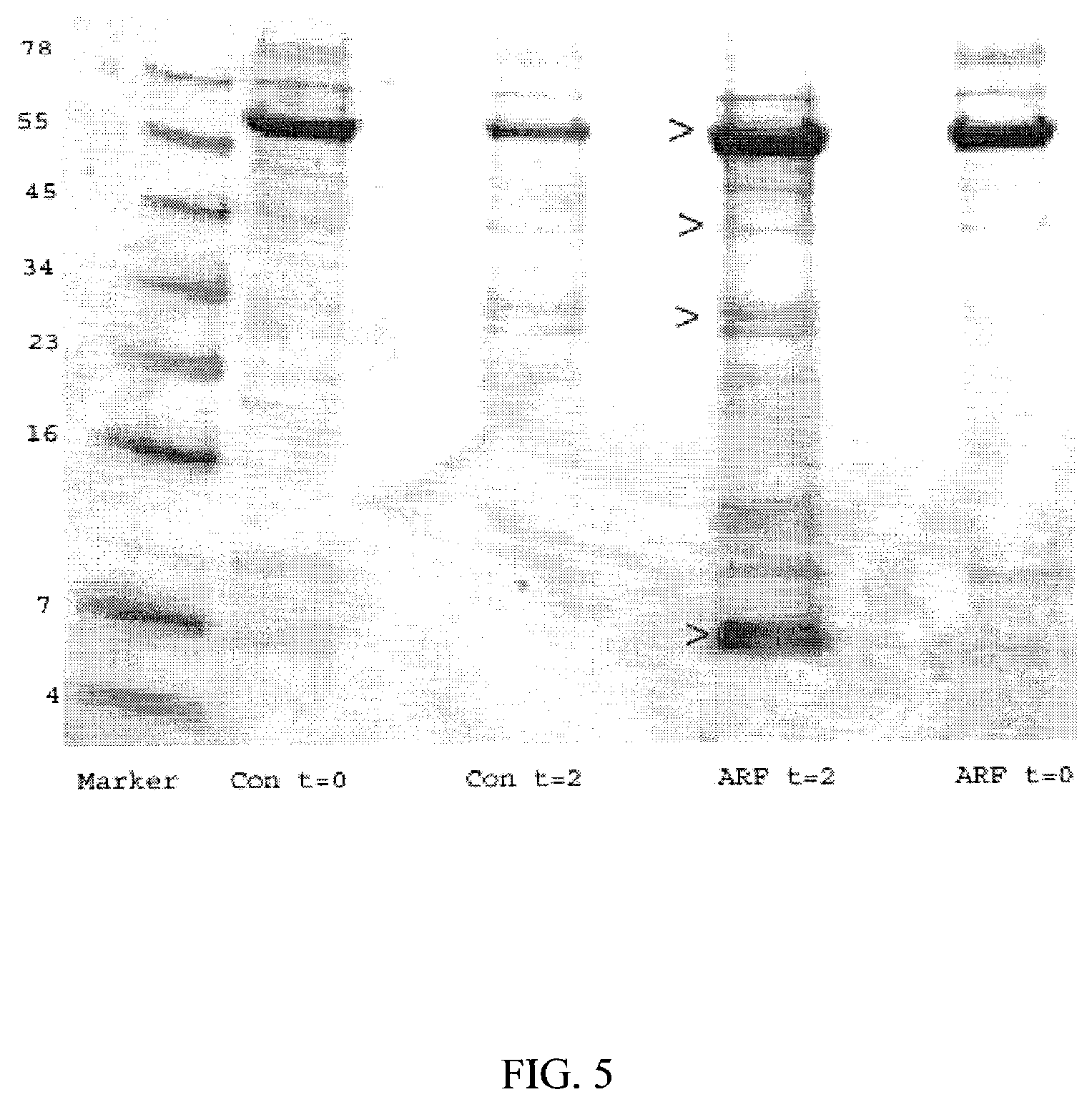Method and kit for the early detection of impaired renal status
a technology of impaired renal status and kit, which is applied in the field of methods and kits for determining the renal status of subjects, can solve the problems of acute renal failure secondary to renal failure, shorten the treatment time, and reduce the mortality rate associated with the diseas
- Summary
- Abstract
- Description
- Claims
- Application Information
AI Technical Summary
Problems solved by technology
Method used
Image
Examples
experiment 1
[0068]Equal volumes (1 μl) of urine were diluted 1:5 with sodium phosphate (pH 6) buffer, and 5 μl was spotted onto an NP20 protein array chip. Each spot was washed with distilled water, and a saturated sinapinic acid solution was used as matrix. The low intensity spectra were obtained with the laser set at an intensity of 145 and the high intensity spectra with the laser set at 195. The resulting spectra were calibrated using All-in-1 peptide / protein standards.
experiment 2
[0069]To confirm the changes in urinary proteins observed by SELDI-TOF-MS, equal levels of samples were subjected to SDS-PAGE. Briefly, 25 μl urine samples were dissolved in an equal volume of 2×SDS-PAGE loading buffer, boiled for 10 minutes, loaded on a 10-20% Tris-Tricine gel, subjected to electrophoresis, and stained with Coomassie Blue. All values are mean±SE. SAS version 8.2 was used for statistical analysis of patient characteristics and clinical outcomes. The Mann-Whitney rank sum test was used to compare continuous variables, and Fisher's exact test was used to compare categorical variables.
[0070]Employed Method: The Biomarker Wizard (Ciphergen) was employed for initial clustering and descriptive statistics. Ciphergen Express software was used for hierarchical clustering and to generate Receiver Operating Characteristic (ROC) curves. The area under the curve was calculated to provide a measure of robustness for each biomarker. An area under the curve of 0.5 is considered no ...
experiment 3
[0071]The primary outcome of acute renal injury, defined as a 50% or greater increase in serum creatinine from baseline, occurred in 15 of 60 consecutive patients, yielding an incidence rate of 25%. Out of these, 5 patients displayed an increase in serum creatinine in the 24-48 hours after CPB, but in the other 10 patients the increase was further delayed to the 48-72 hour period after CPB. Thus, the diagnosis of acute renal injury using currently accepted clinical practices could be made only days, rather than hours, after the inciting event. Based on the primary outcome, patients were classified into “control” and “ARF” (acute renal injury / failure) groups.
[0072]Comparisons were made between the ARF group (n=15) and age- and gender-matched controls (n=15). There were no significant differences between the two groups in ethnic origin, hourly urine output, urine creatinine, or urine specific gravity measurements at baseline. Patients in the ARF group encountered longer cardio-pulmona...
PUM
| Property | Measurement | Unit |
|---|---|---|
| pH | aaaaa | aaaaa |
| pH | aaaaa | aaaaa |
| molecular weight | aaaaa | aaaaa |
Abstract
Description
Claims
Application Information
 Login to View More
Login to View More - R&D
- Intellectual Property
- Life Sciences
- Materials
- Tech Scout
- Unparalleled Data Quality
- Higher Quality Content
- 60% Fewer Hallucinations
Browse by: Latest US Patents, China's latest patents, Technical Efficacy Thesaurus, Application Domain, Technology Topic, Popular Technical Reports.
© 2025 PatSnap. All rights reserved.Legal|Privacy policy|Modern Slavery Act Transparency Statement|Sitemap|About US| Contact US: help@patsnap.com



